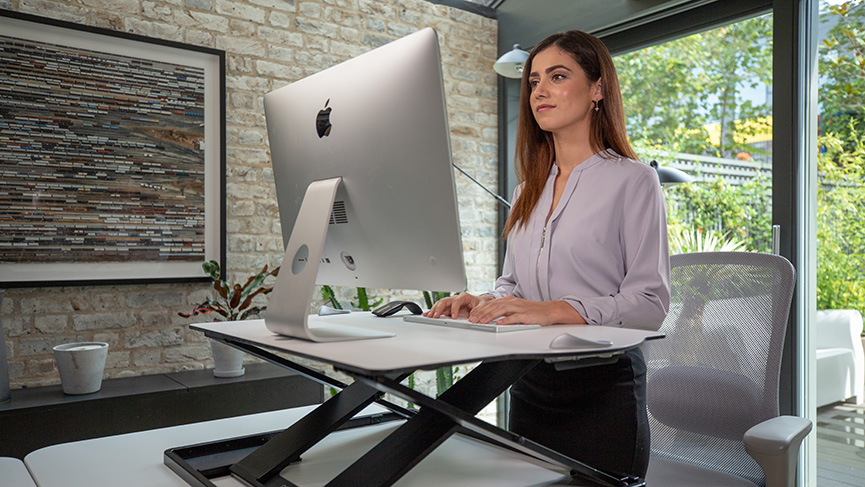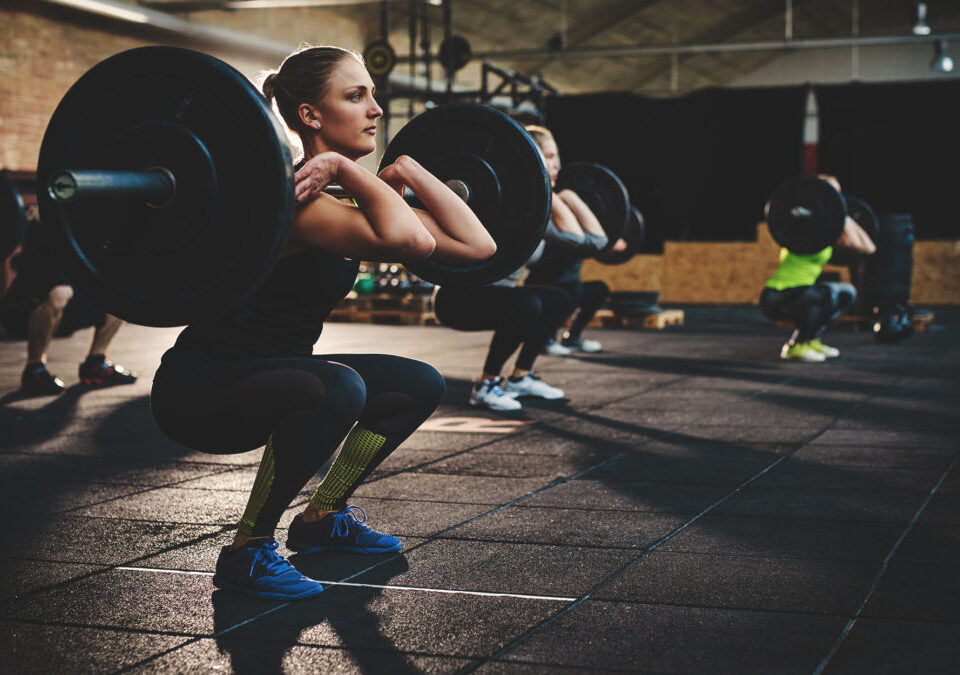
The Six Foundational Movements for a Full Body Workout
February 2, 2024
The Sweet Truth: Understanding Sugar Consumption and Its Impact on Health
March 4, 20248 Desk Friendly Exercises and Stretches for a Healthier Workday
In today's technological world, many of us find ourselves spending the majority of our days glued to our desks, staring at screens, and typing away on keyboards. Research suggests that on average, adults sit for approximately 60% of their working day, which is more than 7 hours! While this sedentary lifestyle may be unavoidable for some, it's essential to prioritize our physical health amidst the demands of our work. Incorporating simple exercises and stretches into our daily routine can make a world of difference in combating the negative effects of prolonged sitting. Here are 8 desk-friendly exercises and stretches to help you stay active and rejuvenated throughout your workday.
1. Seated Chest Opener
HOW: Sit tall with fingers placed gently on the back or sides of head. Squeeze your shoulder blades together by driving your elbows apart. Then round your shoulders by bringing you elbows together in front. If your hands come off your head slightly at the end ranges of motion than is perfectly ok. Repeat for 30 seconds.
FEEL: You should feel a pec stretch through your chest while your shoulder blade muscles are working.
COMPENSATION: With this exercise, don’t hold your breath, use it to your advantage. Breathe in when you round forward, breathe out when you open up your chest. Make sure shoulder blades lead movement.
2. Seated Chin Tuck
HOW: Sit tall so hip, rib cage, and shoulders are stacked. Perform chin tuck by pulling your chin towards wall behind you. Should feel like you are getting taller as you tuck. Then release and relax. Repeat for 30 seconds.
FEEL: Will feel cervical neck flexors working on the front side of your neck. You might also simultaneously feel a stretch of the muscles on the back side of the neck.
COMPENSATION: Avoid tucking chin down towards chest. Instead think tuck back and up. If you are sitting in a slouched posture it makes it much harder to perform the chin tuck properly.
3. Seated Thoracic Rotation
HOW: Stabilize your arm on the inside of one leg by grabbing ankle and rotate open towards the opposite side as far as you can. Let your eyes follow your hand as you rotate towards ceiling and return back down. Repeat 30 seconds on each side.
FEEL: You shoulder feel rotation through your thoracic spine between your shoulder blades.
COMPENSATION: With this exercise, don’t hold your breath, use it to your advantage. Breathe out as you rotate up and breathe in as you come back down. Move through a comfortable range of motion which will increase with practice.
4. Standing Chest Opener
HOW: Stand tall and interlock hands behind you. Palms facing butt. Slide hands down butt, extend elbows fully, and then lift hands away from butt without chest falling forward. Hold for 30 seconds.
FEEL: You should feel a big pec stretch and bicep stretch through the front of your chest and arms.
COMPENSATION: Avoid rounding your posture or bending your elbows to lift hands further behind you. If you already feel a pec and/or bicep stretch after sliding hands down your butt then you might not be ready for the liftoff yet and this is ok.
5. Child’s Pose On Wall
HOW: Place your hands against the wall at about shoulder height. Hinge at your hips, sitting your butt back, while bring your chest forward, this will be a body-on-arm movement which will increase the amount of shoulder elevation you are working into. Be gentle and move within your comfort. Change the width of your arms for more comfort. Repeat for 30 seconds.
FEEL: You should feel a stretch in the shoulders and/or the mid-back region.
COMPENSATION: Avoid pushing into the wall with your arms, this is a relatively passive exercise meaning your arms shouldn’t be working during this stretch.
6. Banded Pull Aparts
HOW: While keeping your elbows at your side, focus on spreading the arms as far as you can while holding onto a band. Initiate this motion with the shoulder blades and allow your arms to follow. The firmer the band (Double up the band if appropriate) or the more you tighten up the band, the more challenging this exercise will become. Repeat for 30 seconds.
FEEL: Primarily the muscles on the inside of the shoulder blade with some assistance from the muscles on the back of the shoulder.
COMPENSATION: Keep your elbows as tight to your sides as you can and avoid the low back from arching.
7. Kneeling Hip Flexor Stretch
HOW: Place hands on desk for support so you can hook one foot on chair. Drop knee down to ground (use pillow for comfort) and assume tall posture. Tuck hips under into posterior tilt by squeezing butt muscle on down leg. Can lean forward through belt buckle if extra stretch is needed. Use desk to help you back up and switch. Repeat 30 seconds each side.
FEEL: You should feel a front of thigh stretch on the down leg. If this version is too intense for you, do it without the foot hooked on the chair and instead just have it on the floor.
COMPENSATION: Avoid arching through lower back. Remember, you are trying to teach your muscles to lengthen, not punish them. So a low to moderate intensity stretch is more beneficial than trying to crank yourself into an uncomfortable one.
8. Hamstring Stretch
HOW: Place chair next to desk so you can hold on to desk for support. Place foot closest to desk on chair with toes pointed towards ceiling and knee straight. Reach towards toes with opposite hand. Repeat 30 seconds each side.
FEEL: You should feel a stretch on back side of the thigh which might even travel down into your calf. If this version is too intense for you, try it without the reach or lower the height of your chair.
COMPENSATION: Avoid your foot on the chair from rolling out to the side. The straighter the toes the more you will feel the stretch where you need to. Remember, you are trying to teach your muscles to lengthen, not punish them. So a low to moderate intensity stretch is more beneficial than trying to crank yourself into an uncomfortable one.
Take a work break every 60 minutes and choose 2 or 3 of these movements to perform during it. I find it very helpful to either set a reminder on my phone or put a sticky note on my computer to remember to move.
Your body will thank you later!
Garrett Withiam, ATC
Assistant Director of Health & Fitness
Personal Training Manager




